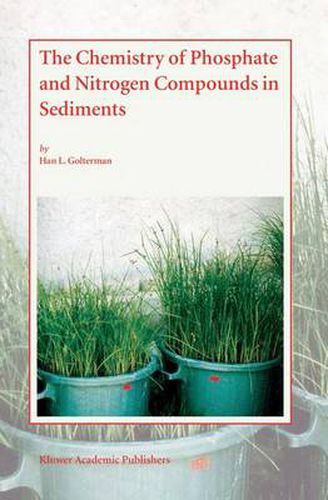Readings Newsletter
Become a Readings Member to make your shopping experience even easier.
Sign in or sign up for free!
You’re not far away from qualifying for FREE standard shipping within Australia
You’ve qualified for FREE standard shipping within Australia
The cart is loading…






This title is printed to order. This book may have been self-published. If so, we cannot guarantee the quality of the content. In the main most books will have gone through the editing process however some may not. We therefore suggest that you be aware of this before ordering this book. If in doubt check either the author or publisher’s details as we are unable to accept any returns unless they are faulty. Please contact us if you have any questions.
Phosphate and nitrogen compounds control growth of vegetation in most, if not all, fresh, brackish or salt waters. This book deals with the processes constituting the cycles of the phosphate and nitrogen compounds in sediment and the phosphate equilibria between the sediment and the overlying water. Sediment, to a large extent, controls the P- and N concentrations and thus primary production. In most waters, too high concentrations of these compounds cause excessive growth of algae, causing so-called eutrophication. Abatement of this can only be achieved after a complete understanding of the quantitative role of sediment in the P- and N cycle. Thus, for the phosphate cycle the following processes are evaluated: - P-binding onto sediments, viz., onto iron hydroxide and calcium carbonate (limestone), Fractionation of phosphate in relation to its bioavailability, Release processes under anoxic and oxic conditions, and their dependence on pH changes, Further items taken into account, including the influence of drying of sediment and its resuspension by wind. For the nitrogen cycle, the following are discussed: - Ammonification of organically bound nitrogen, Nitrification and denitrific
$9.00 standard shipping within Australia
FREE standard shipping within Australia for orders over $100.00
Express & International shipping calculated at checkout
This title is printed to order. This book may have been self-published. If so, we cannot guarantee the quality of the content. In the main most books will have gone through the editing process however some may not. We therefore suggest that you be aware of this before ordering this book. If in doubt check either the author or publisher’s details as we are unable to accept any returns unless they are faulty. Please contact us if you have any questions.
Phosphate and nitrogen compounds control growth of vegetation in most, if not all, fresh, brackish or salt waters. This book deals with the processes constituting the cycles of the phosphate and nitrogen compounds in sediment and the phosphate equilibria between the sediment and the overlying water. Sediment, to a large extent, controls the P- and N concentrations and thus primary production. In most waters, too high concentrations of these compounds cause excessive growth of algae, causing so-called eutrophication. Abatement of this can only be achieved after a complete understanding of the quantitative role of sediment in the P- and N cycle. Thus, for the phosphate cycle the following processes are evaluated: - P-binding onto sediments, viz., onto iron hydroxide and calcium carbonate (limestone), Fractionation of phosphate in relation to its bioavailability, Release processes under anoxic and oxic conditions, and their dependence on pH changes, Further items taken into account, including the influence of drying of sediment and its resuspension by wind. For the nitrogen cycle, the following are discussed: - Ammonification of organically bound nitrogen, Nitrification and denitrific